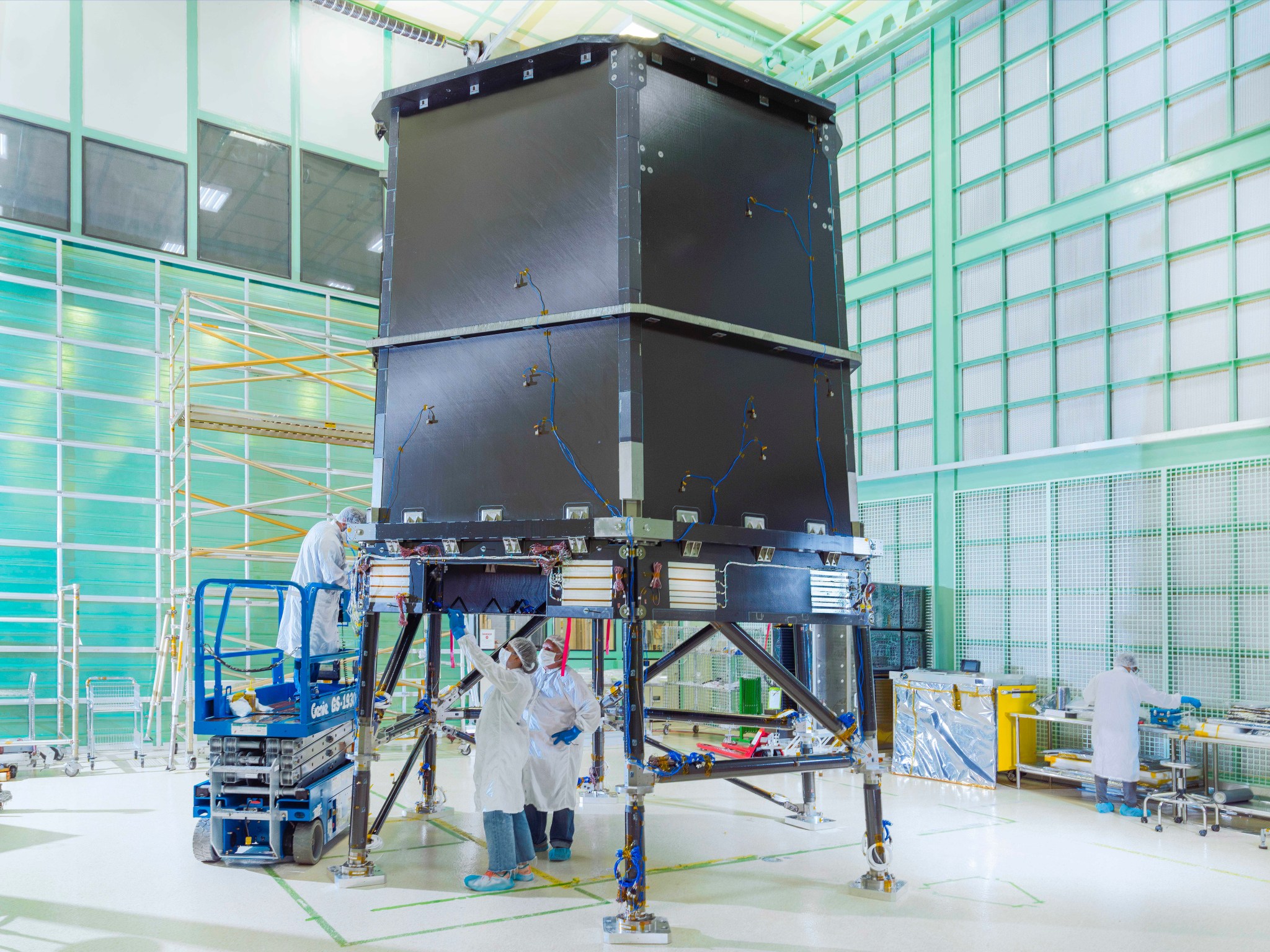4 min read
A major component of NASA's Nancy Grace Roman Space Telescope just took a spin on the centrifuge at NASA's Goddard Space Flight Center in Greenbelt, Maryland. Called the Outer Barrel Assembly, this piece of the observatory is designed to keep the telescope at a stable temperature and shield it from stray light.

The two-part spin test took place in a large, round test chamber. Stretching across the room, a 600,000-pound (272,000-kilogram) steel arm extends from a giant rotating bearing in the center of the floor.
The test itself is like a sophisticated version of a popular carnival attraction, designed to apply centrifugal force to the rider - in this case, the outer covering for Roman's telescope. It spun up to 18.4 rotations per minute. That may not sound like much, but it generated force equivalent to just over seven times Earth's gravity, or 7 g, and sent the assembly whipping around at 80 miles per hour.
"We couldn't test the entire Outer Barrel Assembly in the centrifuge in one piece because it's too large to fit in the room," said Jay Parker, product design lead for the assembly at Goddard. The structure stands about 17 feet (5 meters) tall and is about 13.5 feet (4 meters) wide. "It's designed a bit like a house on stilts, so we tested the 'house' and 'stilts' separately."
The "stilts" went first. Technically referred to as the elephant stand because of its similarity to structures used in circuses, this part of the assembly is designed to surround Roman's Wide Field Instrument and Coronagraph Instrument like scaffolding. It connects the upper portion of the Outer Barrel Assembly to the spacecraft bus, which will maneuver the observatory to its place in space and support it while there. The elephant stand was tested with weights attached to it to simulate the rest of the assembly's mass.

Next, the team tested the "house" - the shell and a connecting ring that surround the telescope. These parts of the assembly will ultimately be fitted with heaters to help ensure the telescope's mirrors won't experience wide temperature swings, which make materials expand and contract.
To further protect against temperature fluctuations, the Outer Barrel Assembly is mainly made of two types of carbon fibers mixed with reinforced plastic and connected with titanium end fittings. These materials are both stiff (so they won't warp or flex during temperature swings) and lightweight (reducing launch demands).
If you could peel back the side of the upper portion -- the house's "siding" -- you'd see another weight-reducing measure. Between inner and outer panels, the material is structured like honeycomb. This pattern is very strong and lowers weight by hollowing out portions of the interior.
Designed at Goddard and built by Applied Composites in Los Alamitos, California, Roman's Outer Barrel Assembly was delivered in pieces and then put together in a series of crane lifts in Goddard's largest clean room. It was partially disassembled for centrifuge testing, but will now be put back together and integrated with Roman's solar panels and Deployable Aperture Cover at the end of the year.
In 2025, these freshly integrated components will go through thermal vacuum testing together to ensure they will withstand the temperature and pressure environment of space. Then they'll move to a shake test to make sure they will hold up against the vibrations they'll experience during launch. Toward the end of next year, they will be integrated with rest of the observatory.
To virtually tour an interactive version of the telescope, visit:
https://roman.gsfc.nasa.gov/interactive
The Nancy Grace Roman Space Telescope is managed at NASA's Goddard Space Flight Center in Greenbelt, Maryland, with participation by NASA's Jet Propulsion Laboratory and Caltech/IPAC in Southern California, the Space Telescope Science Institute in Baltimore, and a science team comprising scientists from various research institutions. The primary industrial partners are BAE Systems, Inc in Boulder, Colorado; L3Harris Technologies in Rochester, New York; and Teledyne Scientific & Imaging in Thousand Oaks, California.
By Ashley Balzer
NASA's Goddard Space Flight Center, Greenbelt, Md.






